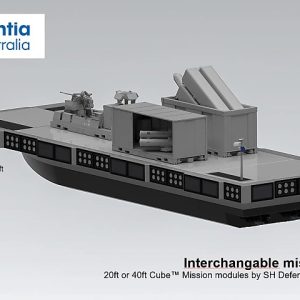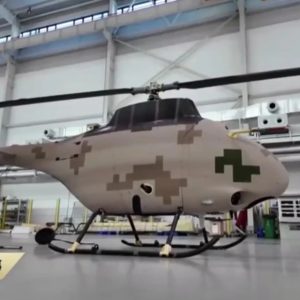Pearson Engineering’s latest initiatives put AI and robotics in land defence at the centre of combat engineering. Beyond marginal efficiency gains, the company is repositioning breaching and route‑opening as data‑driven, optionally crewed missions that compress risk while sustaining tempo. The sponsored brief in Shephard Media sets the stage; this analysis goes deeper on what the stack (MBMMP, BEACON, WEEVIL, Threat‑Sense + Skydio) means for NATO‑aligned forces and doctrine. [1]
Why this matters: breaching as a high‑tempo, low‑exposure mission
Breaching is a make‑or‑break phase of combined‑arms operations. The first vehicles across a mine belt are historically the most vulnerable, and delays cascade across the brigade’s scheme of manoeuvre. Modern doctrine pushes engineers to deliver mobility under fire while commanders suppress, obscure and secure the breach. The Pearson stack aligns squarely with that framework: push the dangerous reduction tasks onto robotic assets, push sensing forward into the air, and keep manned vehicles out of the kill box. [8][9]
From an acquisition perspective, the strategy is pragmatic: retrofit before you replace. BEACON turns existing fleets into optionally crewed assets; MBMMP gives those assets modular, role‑swappable breaching capability; and Threat‑Sense extends the sensor horizon without adding bespoke UAV programs. That is cost‑realistic and interoperable.
From retrofit to RCV: modular breaching at scale
Pearson’s Minefield Breaching Modular Mission Payload (MBMMP) brings a split‑plough architecture to robotic combat vehicles, allowing an RCV (or repurposed platform) to open lanes through anti‑tank minefields. The payload docks quickly and can be swapped for other mission kits, supporting the “single vehicle, multiple missions” approach popularized at recent shows. [2]
In practical terms, modularity matters for sustainment. A breaching kit that detaches at the frame reduces maintenance complexity and shortens the time a vehicle is out of action. For allied armies balancing urgent needs against budget ceilings, this flexibility is a force multiplier.
Technical focus: control, survivability, tempo
Control. BEACON provides remote operation via an operator control unit or a command‑vehicle station, enabling “optionally crewed” use of legacy fighting vehicles and RCVs. It has been applied across Pearson’s robotics programs and trial‑integrated on the US Army’s ABV, signalling host‑agnostic design. [5]
Survivability. Offloading the initial breach to an uncrewed platform cuts exposure for sapper crews and the lead combat team. Risk is redistributed from humans to hardware.
Tempo. With modular breaching and forward reconnaissance, commanders can maintain momentum across complex obstacle belts instead of pausing for manual reduction.
WEEVIL on Warrior: a doctrine‑friendly bridge solution
The WEEVIL effort—developed with the UK’s Defence Science and Technology Laboratory (Dstl)—pairs a Warrior IFV hull with a full‑width mine plough and BEACON control. Early trials concluded successfully; UK MoD announced Army trials on 10 April 2025. Minister for the Armed Forces Luke Pollard framed the aim bluntly: keep troops out of the mine belt by moving operators “several miles away.” [3][4]
This is not just a hardware story; it is a concept of operations (CONOPS) story. A Warrior‑based robotic plough gives commanders a readily available, logistics‑understood host while they explore purpose‑built RCVs. It is a bridge solution that accelerates learning: test remote control latency, video‑feed reliability, and breach‑lane marking with a platform the force already knows. Follow‑on programs—such as proposals to repurpose Warrior hulls at scale for autonomous breaching—show how quickly this can translate into structure. [10]
What’s new compared with legacy engineer vehicles?
Legacy breaching platforms like Trojan place crews in the hazard area, trading armour for risk. WEEVIL reverses the equation: it keeps the mass in the lane and the human outside it. In the near term, that means fewer crews exposed and more routes opened under suppression. In the longer term, it suggests a family of robotic engineer adjuncts that pair with manned breacher‑tanks and assault forces.
Threat‑Sense + Skydio: airborne mine mapping, NATO‑ready
Pearson’s Threat‑Sense uses on‑edge AI to analyse live video feeds, highlighting anti‑tank and anti‑personnel mines on a screen or operator unit, and logging GPS with ATAK/DDS/BMS networking for the combined fight. The system now runs on UAVs, extending the detection bubble ahead of the breach force; the integration with Skydio’s X10D—a NATO‑approved platform—adds a secure aerial layer to route‑clearance. [6][7]
The operational advantage is twofold. First, aerial look‑ahead identifies surface‑laid threats sooner, allowing engineers to choose lanes rather than blunder into them. Second, the data created (detections + coordinates + timestamps) becomes part of the battle network, informing fires and manoeuvre. For NATO formations training to a common interoperability baseline, this is the connective tissue that turns sensors into mobility effects.
Technical focus: from pixels to a breach lane
Computer vision pipeline. Threat‑Sense’s TSPU can ingest HDMI/USB‑C/IP feeds; detections are flagged in real time and can run in “black‑box” mode without a UI—useful for low‑bandwidth links. [6]
Air‑ground team. With a drone operator up to ~5 km away and an uncrewed plough in the lane, the breach commander gains vertical and horizontal stand‑off while keeping a coherent picture of the obstacle and its bypasses. [6][7]
Risks and open questions
Field reality will test latency, contested‑spectrum resilience and counter‑UAS hazards. Reliability of remote control through smoke, dust and EW must be proven. Training pipelines need to formalise the breach commander + RCV operator + UAV operator triangle, and doctrine must capture when to hand off from uncrewed breaching to manned exploitation. None of these are unsolvable; they simply require rigorous trials and honest data.
Market and alliance implications
For industry, the message is clear: the near‑term opportunity sits in retrofit kits and mission payloads that make existing fleets smarter and safer. For allies, the playbook is to adopt interoperable, modular breaching, combine it with airborne mine mapping, and codify it in training cycles. Those who do will cross obstacle belts faster and with fewer casualties; those who don’t will watch the clock and the casualty counts climb.
“It won’t be a moment too soon when we no longer have to send our people directly into harm’s way to clear minefields… This kit could tackle the deadly threat of mines in the most challenging environments, while being remotely operated by our soldiers several miles away.” — UK Minister for the Armed Forces Luke Pollard, 10 April 2025. [4]
References
[1] Shephard Media, “How AI and robotics drive innovation in land‑based defence,” 23 Oct 2025. Link.
[2] Pearson Engineering, “Minefield Breaching Mission Payload (RCV‑Pioneer),” product page. Link.
[3] Pearson Engineering, “WEEVIL robotic mine plough,” news item. Link.
[4] UK Ministry of Defence & Dstl, “New British Army robotic mine plough aims to better shield soldiers from danger,” 10 Apr 2025. Link.
[5] Pearson Engineering, “BEACON — Remote Control System (RCS),” product page. Link.
[6] Pearson Engineering, “Threat‑Sense,” product page. Link.
[7] Pearson Engineering, “NATO‑Approved Skydio drones now feature Threat‑Sense,” press release, 13 Oct 2025. Link.
[8] Joint Publication 3‑15 Barriers, Obstacles, and Mine Warfare for Joint Operations. Link.
[9] US Army article, “Blocked and Bloodied: Lessons from the Combined Arms Breach during the 2023 Ukrainian Counter‑Offensive,” 8 Jul 2025. Link.
[10] Army Recognition, “UK to turn Warrior IFVs into autonomous mine‑breaching vehicles under Project Atilla,” 28 Aug 2025. Link.
Further Reading
- Breaking Defense eBrief — Combat engineering evolves with autonomy and robotics. Read.
- European Security & Defence — Weevil robotic mine plough system promises to take troops out of danger zone. Read.
- Janes — Dstl and Pearson Engineering unveil WEEVIL. Read.











